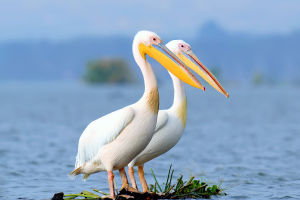Hello, wonderful Lykkers! Today, a fascinating creature takes center stage: the dragonfly.
Known as the kings of the skies, these remarkable insects captivate onlookers with their stunning beauty and extraordinary flying abilities.
Despite years of scientific study, many secrets of the dragonfly remain elusive, leaving enthusiasts and researchers alike in awe of their complexities. Ready to explore the world of dragonflies and uncover their mysteries?
The Aerodynamic Marvels
Dragonflies are renowned for their incredible flying skills. With two pairs of wings that operate independently, they can perform astonishing aerial maneuvers, such as hovering, rapid acceleration, and even backward flight. Some species can reach speeds of up to 35 miles per hour!
This unmatched agility makes them formidable hunters, allowing them to catch prey mid-air. Observing a dragonfly darting through the air is a mesmerizing experience—what's your favorite memory of encountering these winged wonders?
A Glimpse into Their Life Cycle
The life cycle of a dragonfly is as captivating as the creature itself. Beginning as eggs laid in water, they hatch into nymphs that live underwater for several months to several years, depending on the species. During this time, they are fierce predators, feeding on aquatic insects and even small fish.
Once fully developed, the nymphs undergo a metamorphosis, emerging from the water as the vibrant adults that dance through the air. This transformation from nymph to adult is a reminder of nature's magic—have you ever witnessed such a metamorphosis in your own backyard?
The Dragonfly's Eyes
One of the most striking features of the dragonfly is its large, multifaceted eyes. Comprising thousands of individual lenses, these eyes provide an almost panoramic view of their surroundings, enabling them to spot prey and predators alike.
This remarkable vision is key to their hunting strategy, allowing them to react swiftly in any direction. Studies suggest that dragonflies can even perceive ultraviolet light, giving them an edge in locating flowers and other food sources. Isn't it fascinating how evolution has crafted such intricate adaptations?
The Secrets Yet to Uncover
Despite extensive research, many aspects of dragonfly behavior and physiology remain poorly understood. Scientists continue to study their flight mechanics, mating rituals, and migration patterns. For instance, some species undertake long migrations, traveling hundreds of miles to find suitable breeding grounds.
The exact triggers for these migrations and the ecological roles dragonflies play in their environments are still areas of active investigation. What questions do you have about these incredible insects?
Conservation Challenges
As environmental stewards, the importance of protecting dragonflies and their habitats cannot be overstated. These insects are sensitive to changes in their ecosystems, particularly freshwater habitats, which are threatened by pollution and habitat destruction.
Promoting healthy waterways and maintaining wetlands is vital for the survival of dragonflies and countless other species. Engaging in local conservation efforts can help ensure that future generations can enjoy the beauty of these flying jewels. What actions can be taken in your community to protect local wildlife?
The dragonfly stands as a testament to the wonders of evolution and the intricacies of nature. With their remarkable flying abilities, complex life cycles, and striking features, they capture the hearts of all who encounter them.
As scientists continue to unveil the mysteries surrounding these remarkable insects, the magic of dragonflies remains an enchanting part of our natural world. Next time a dragonfly flits by, take a moment to appreciate its beauty and the secrets it holds!


